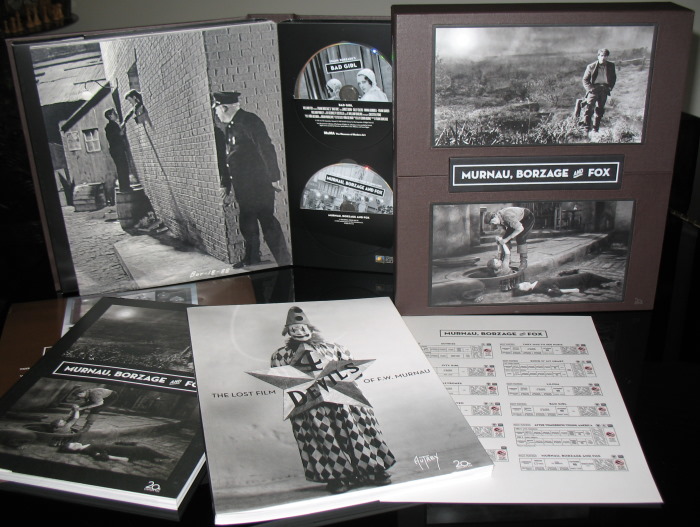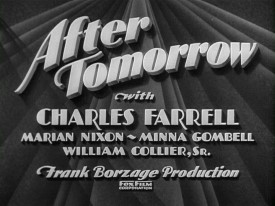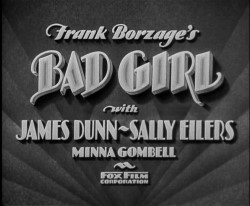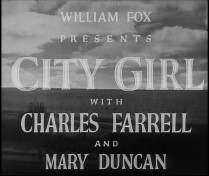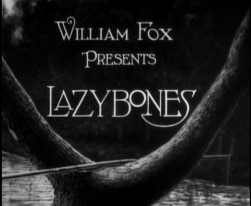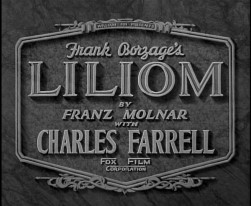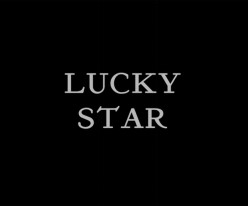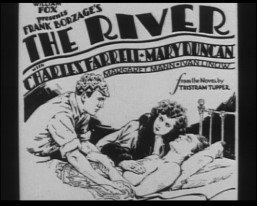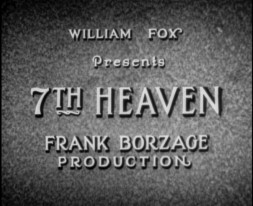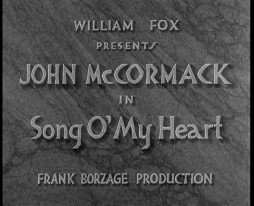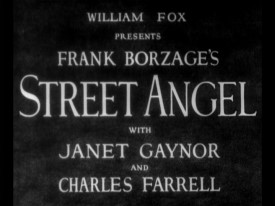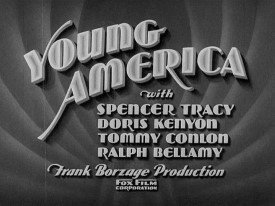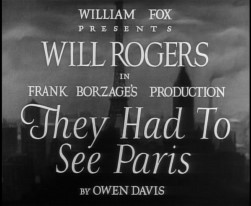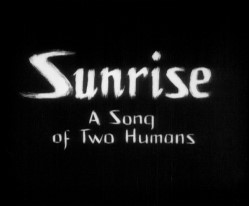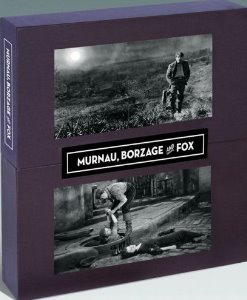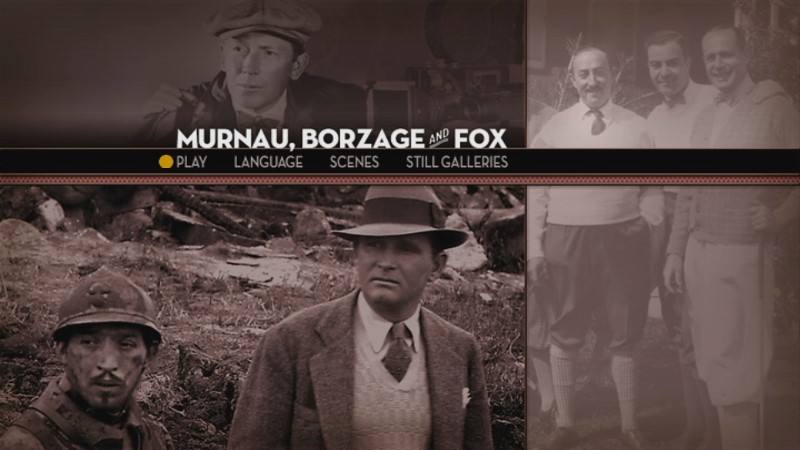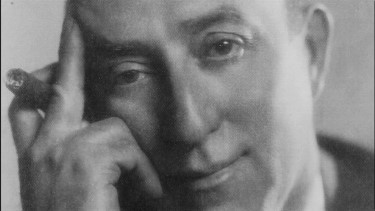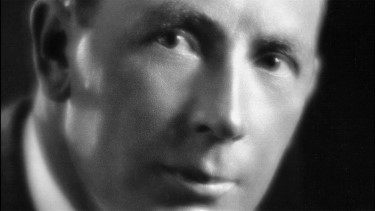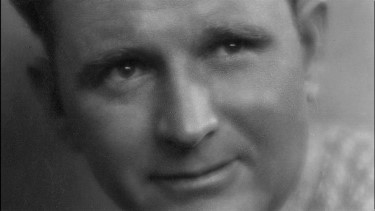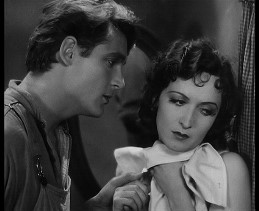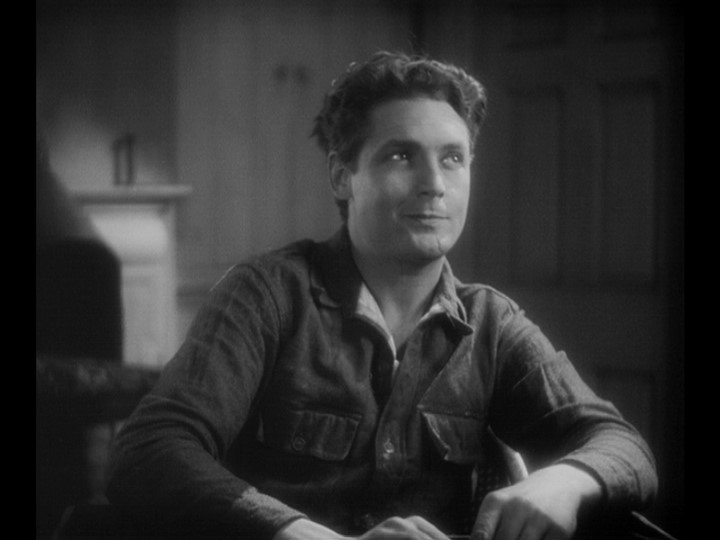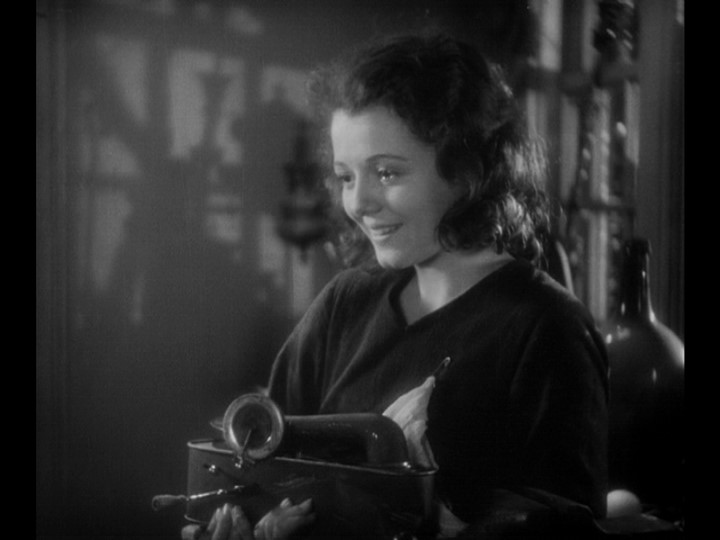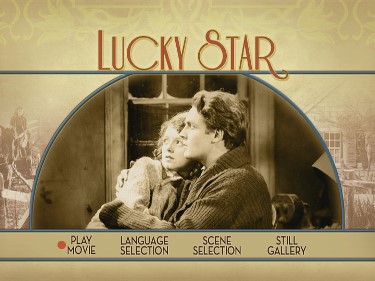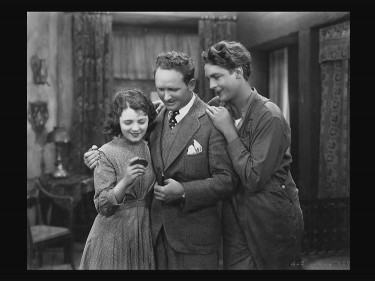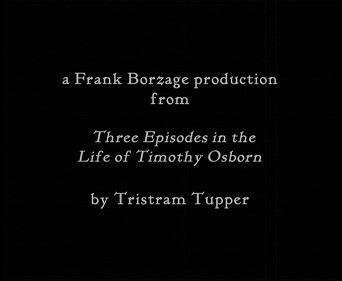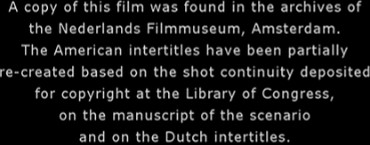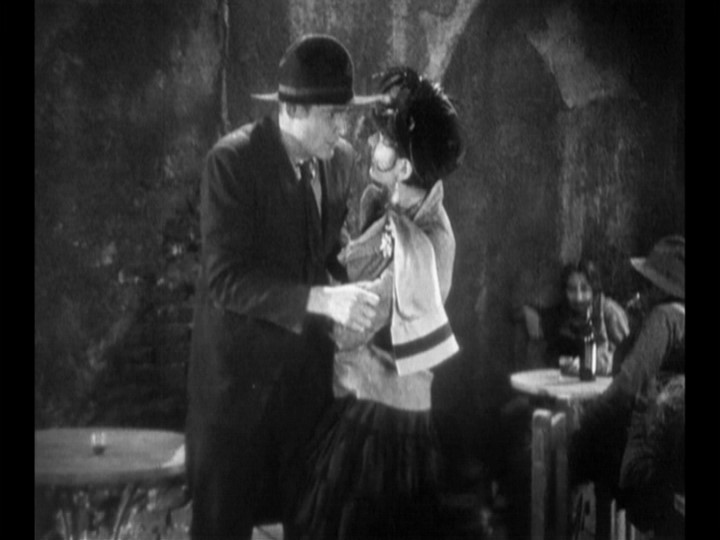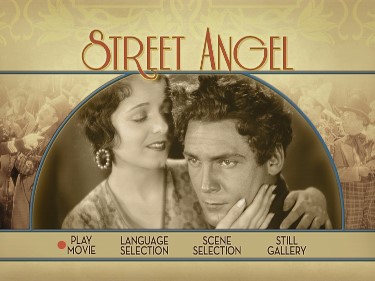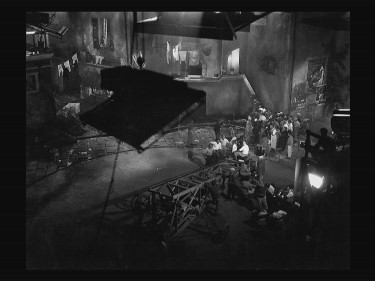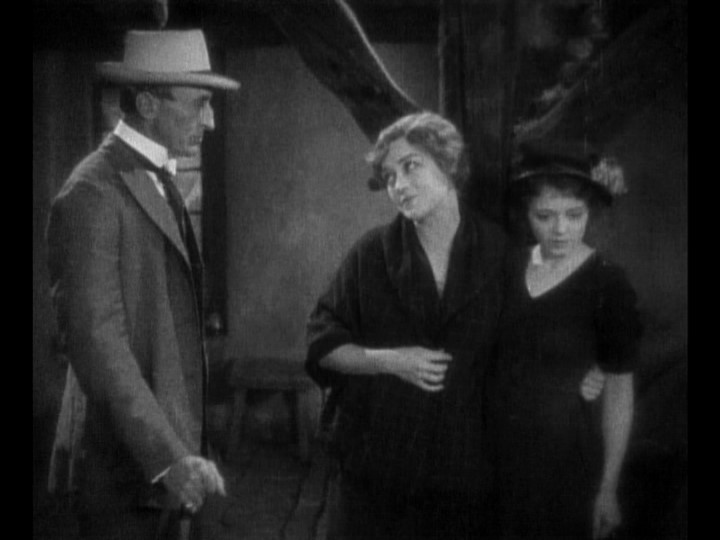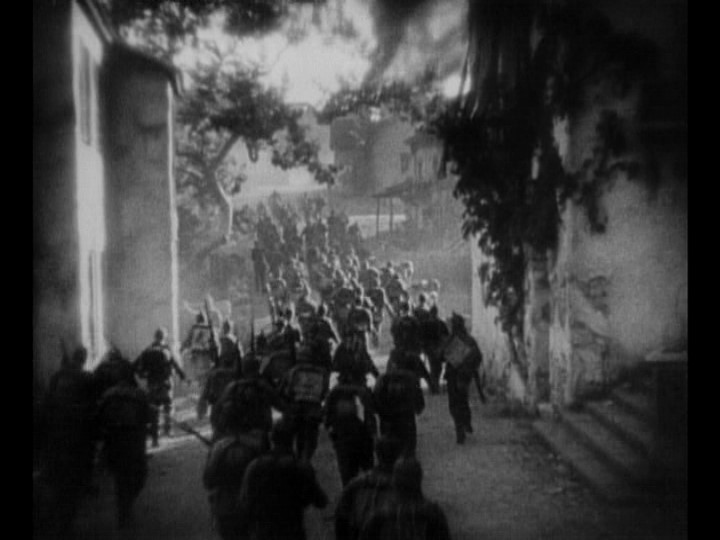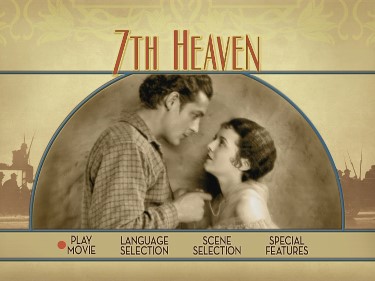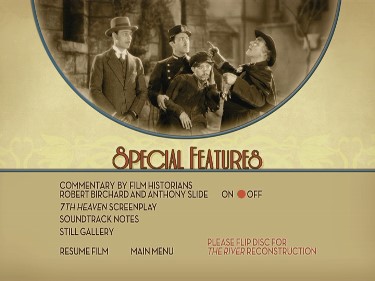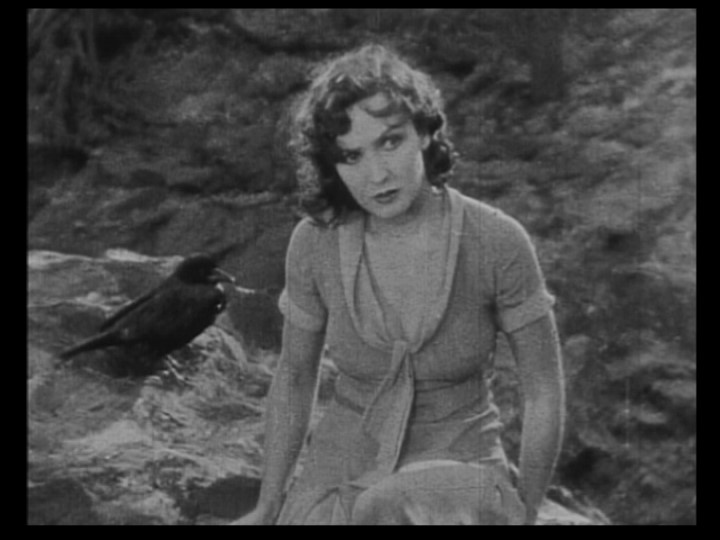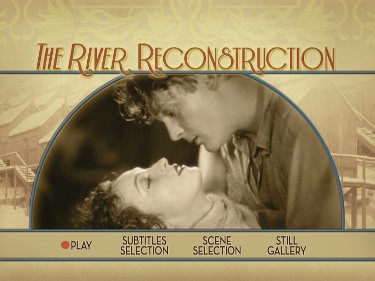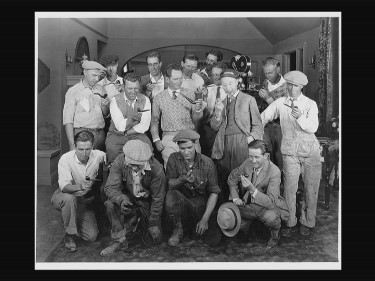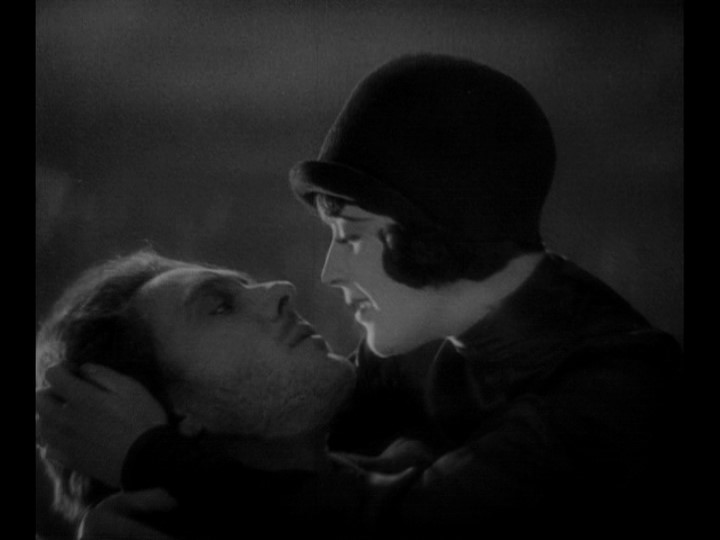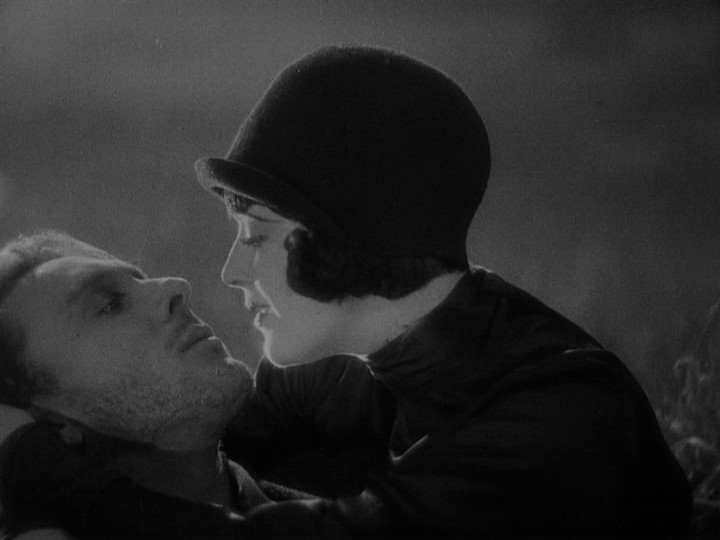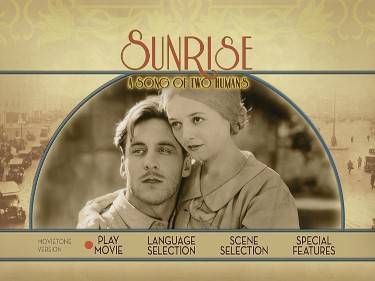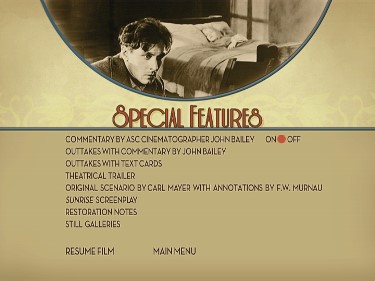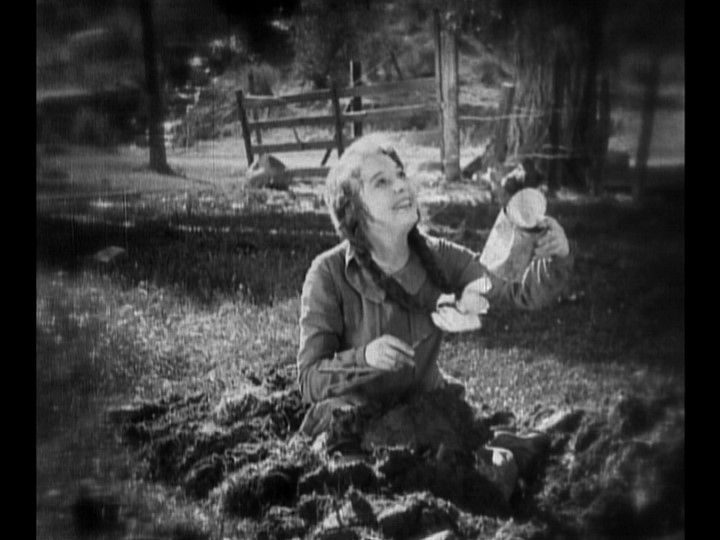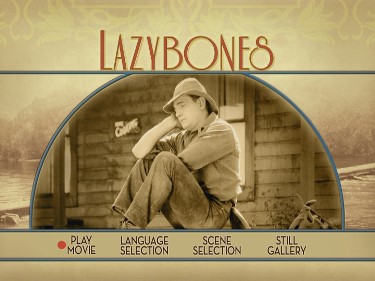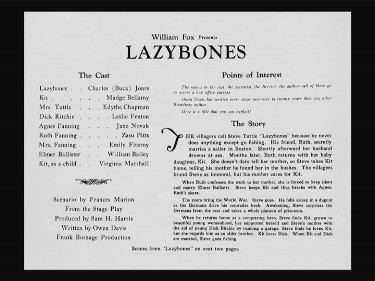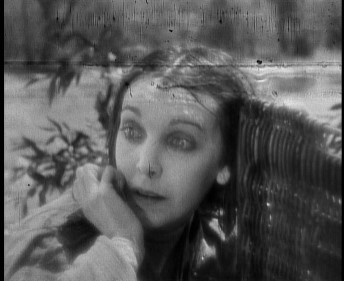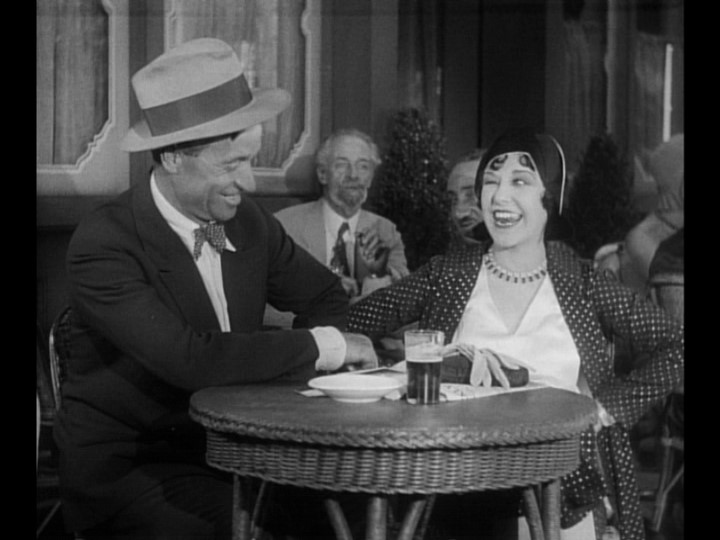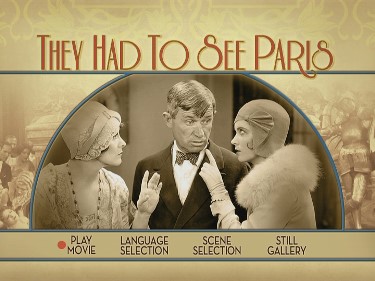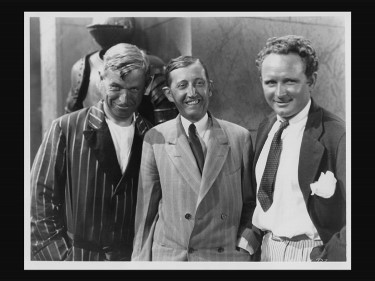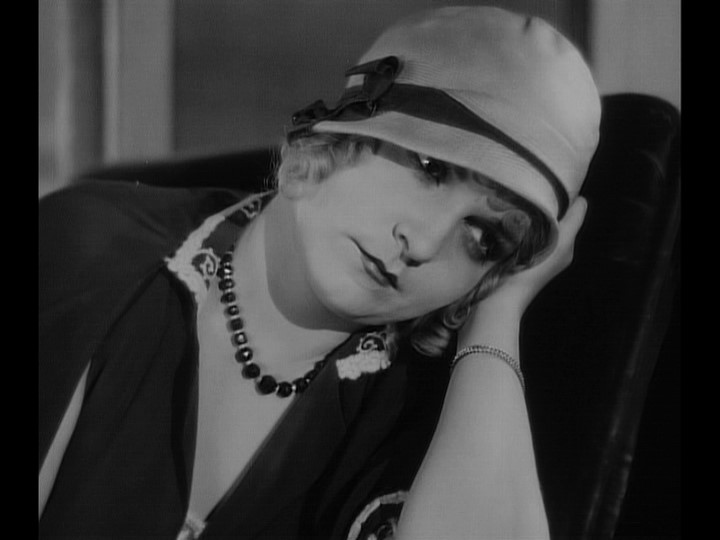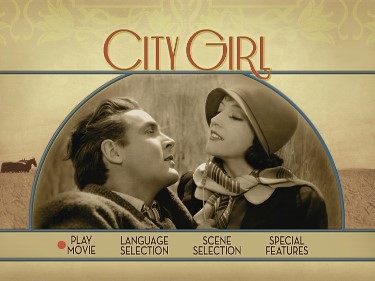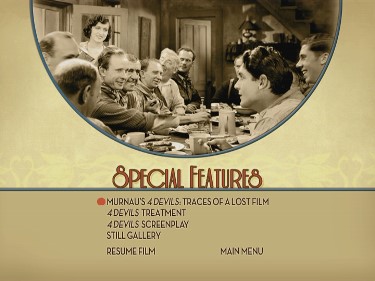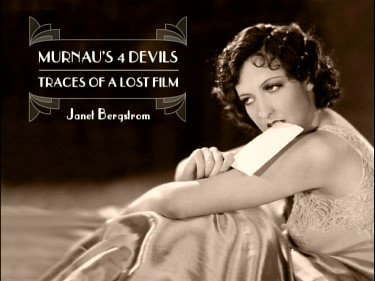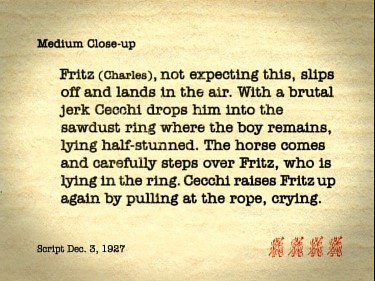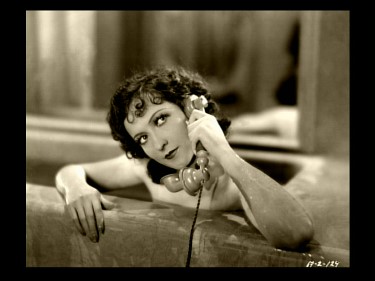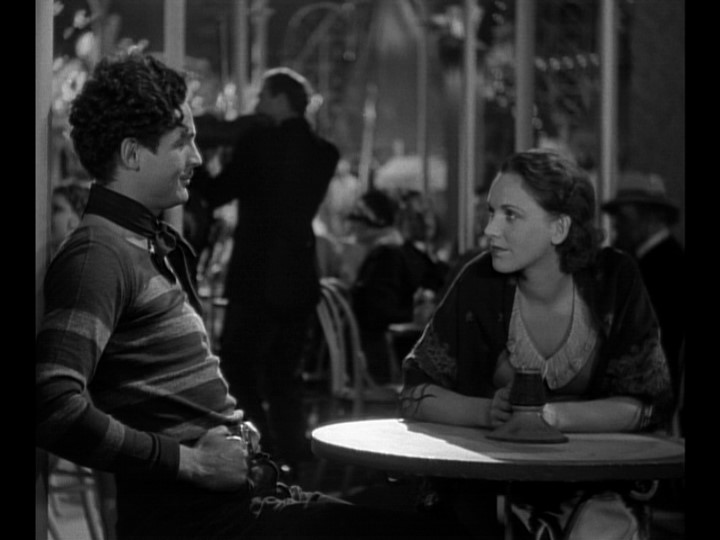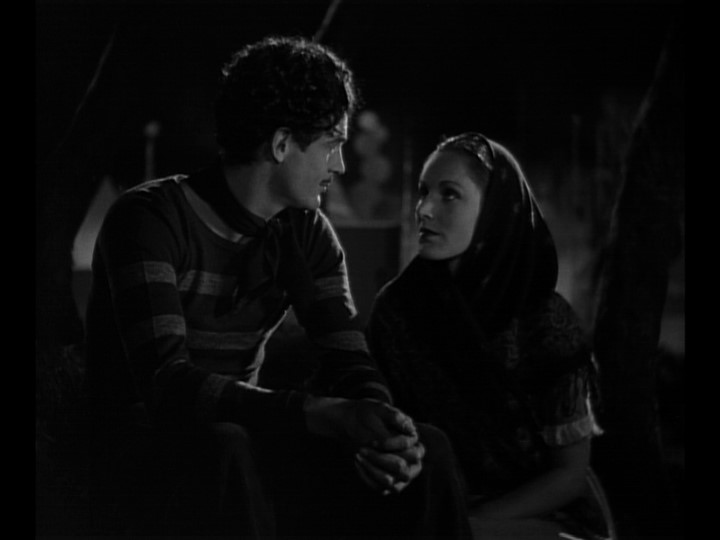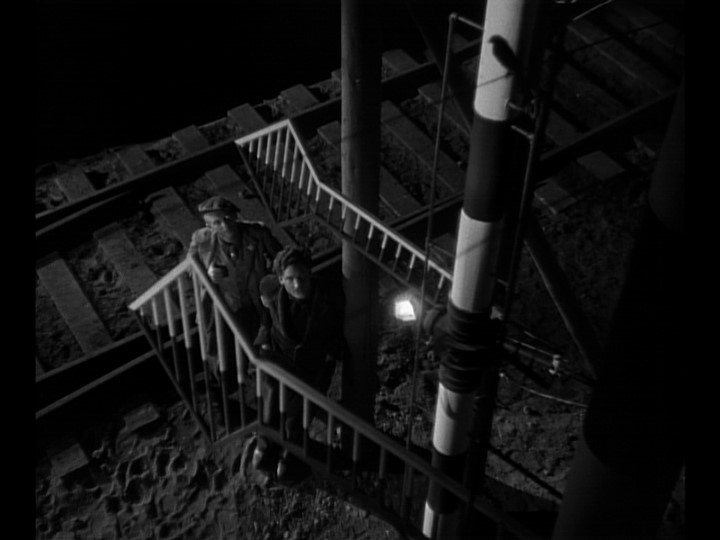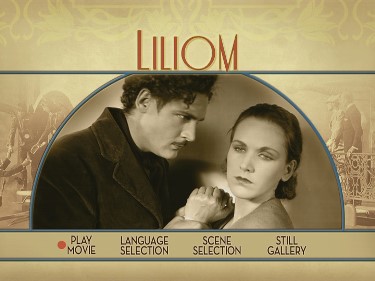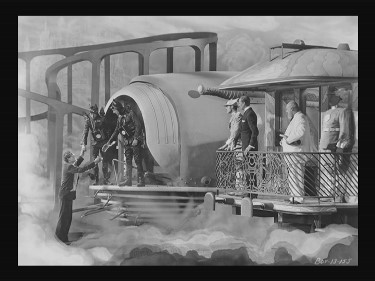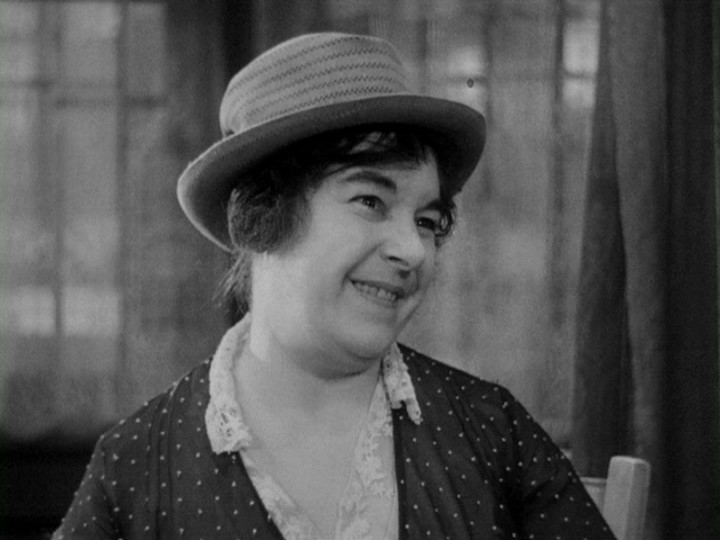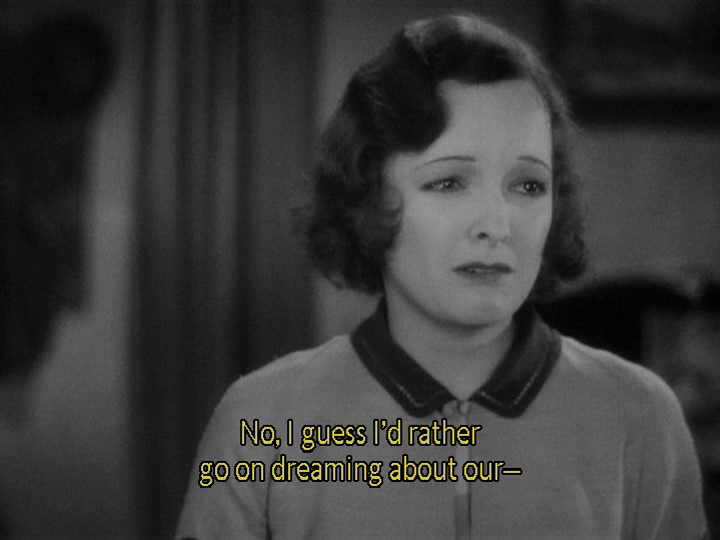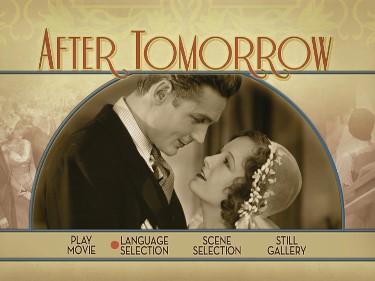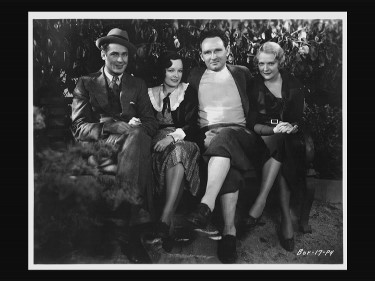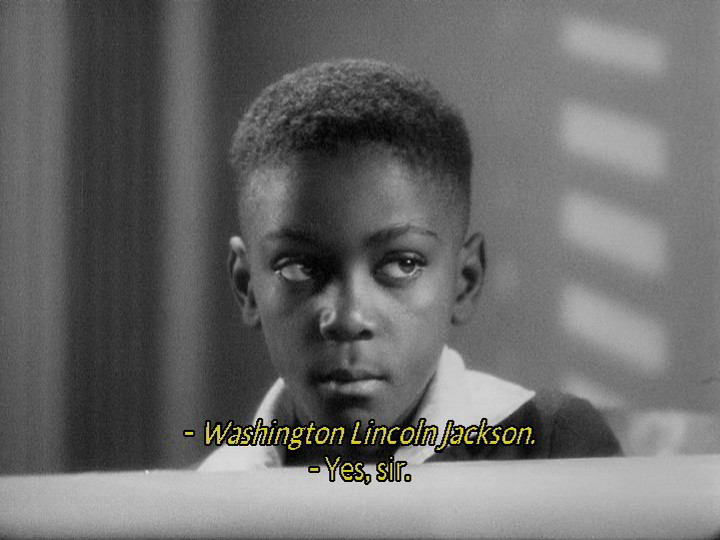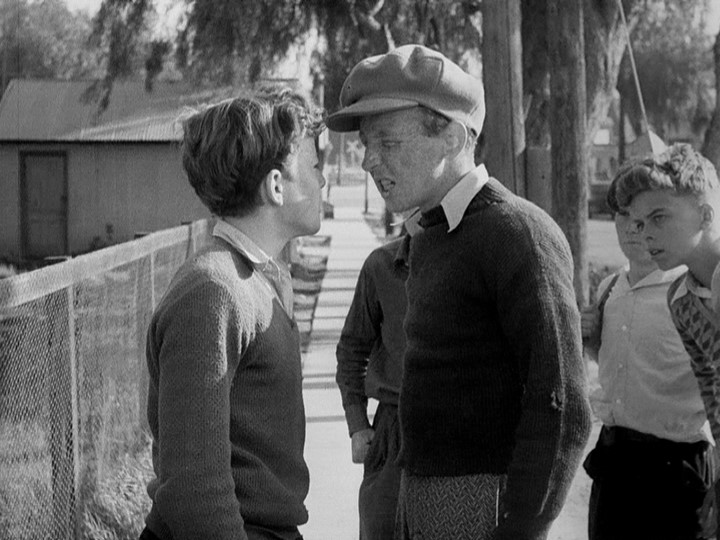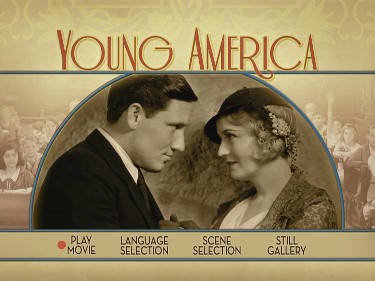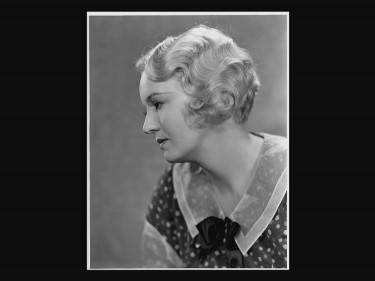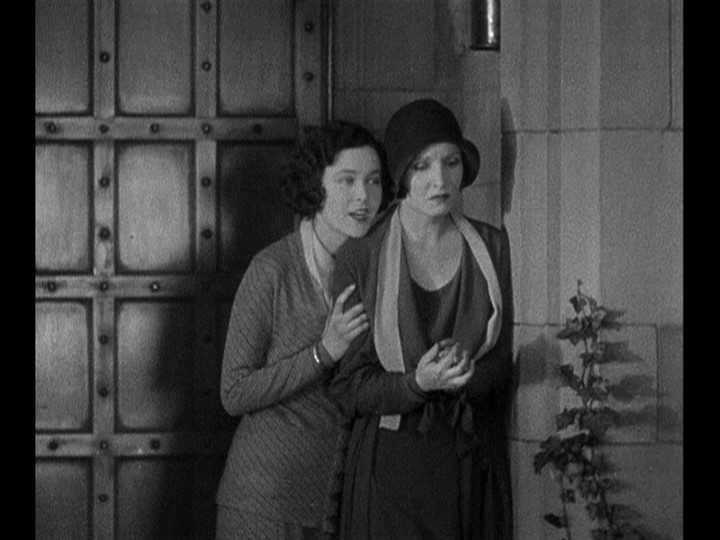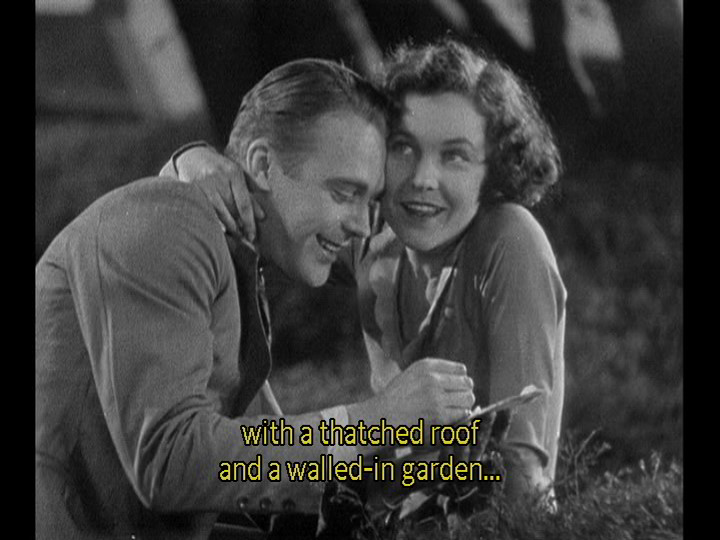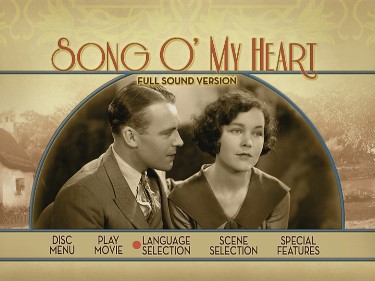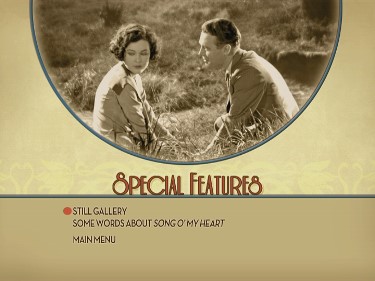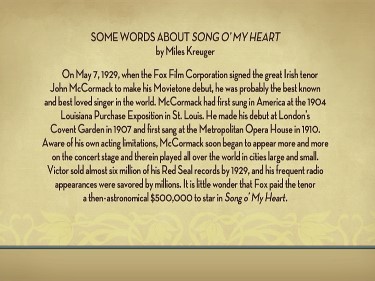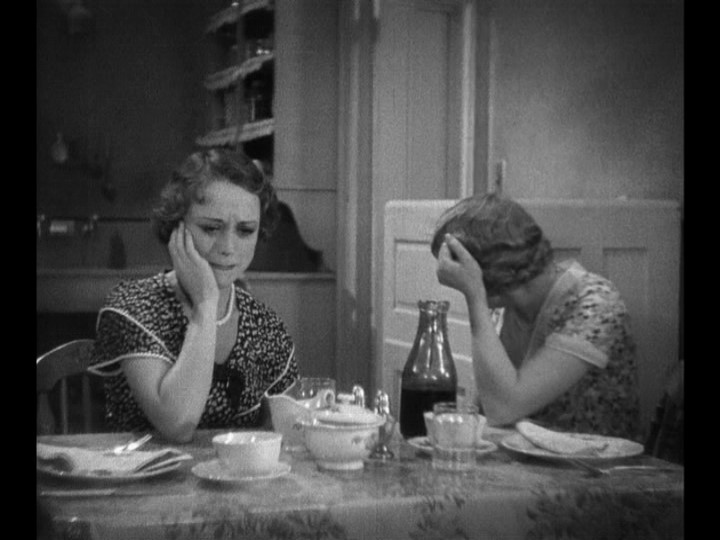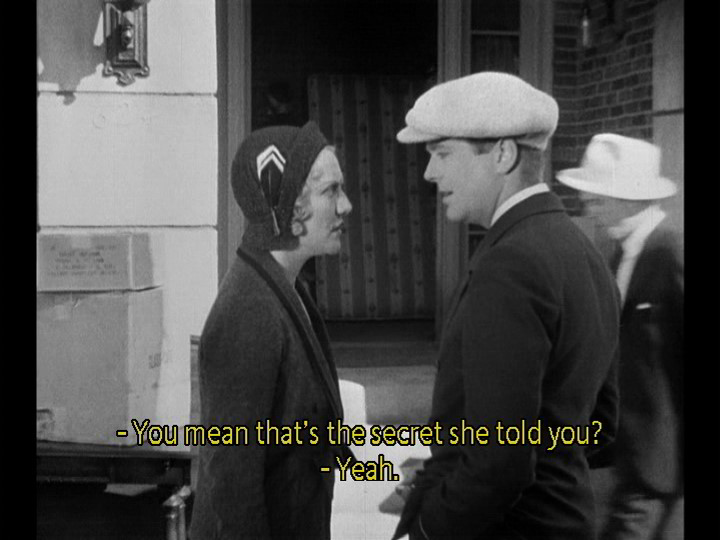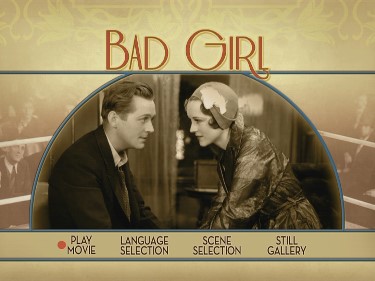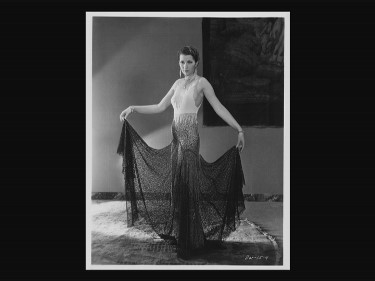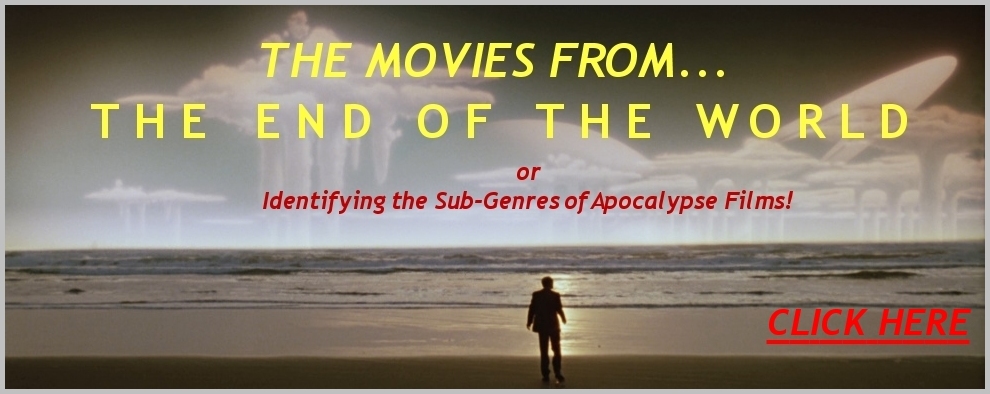Description: The
centerpiece of Fox's new DVD collection is John Cork's new documentary, 'Murnau,
Borzage & Fox.' Featuring rare and unseen footage from the era, the documentary
examines the brief moment in Hollywood history during which art flourished free
of the constraints of commercial interests - and the three men who were at the
center of that great experiment in filmmaking.
On the evening of May 16, 1929 at the Roosevelt Hotel the very first Academy
Awards were held, celebrating the 1927/8 movie season. Of the twelve Oscars
presented that glamorous night, Fox's studio would win half of them.
Fox had invested heavily in making movie directors the stars of his films,
gambling that audiences would gravitate to strong stories told well. On that
evening two of his films, '7th Heaven' and 'Sunrise' captured the coveted golden
statue known as 'Oscar' for 'Drama Direction' (Frank Borzage for 7th Heaven)
and a special Oscar, 'Unique and Artistic Picture' (F.W. Murnau for Sunrise).
- Fox's star actress Janet Gaynor also won a statuette for her performances in
both 'Sunrise' and '7th Heaven.' It was the ultimate validation of Fox's vision
for movies as an art form in their own right. - (Note: Paramount's 'Wings' won
the Oscar for 'Outstanding Production' - but today is credited as the first
'Best Film' - but 'Sunrise' could challenge that assumption).
Fox had started in the business operating nickelodeons in New York and soon
amassed a small fortune as he built a chain of theaters. He fought the monopoly
of the movie distributors such as Edison, eventually becoming a
vertically-integrated mogul in his own right, owning his own movie studio,
distribution company and theater chain. - Fox's first movie studio was located
at the center of American filmmaking, Fort Lee, New Jersey - before moving
operations in Hollywood in the early 1920s.
When Fox saw F.W. Murnau's 'The Last Laugh' and decided to bring the
German expressionist director to Hollywood. Murnau was given carte blanche by
Fox to make any movie he wished, free of financial constraint. Murnau did not
disappoint his benefactor, as 'Sunrise' became one of the most celebrated movies
of all-time. It was an epic production, with the studio back-lot turned into a
rural town and a city - the contrasting settings of this melodrama - as well as
expensive location shooting at Lake Arrowhead.
Concurrently, Frank Borzage, already part of Fox's stable of directors, was
working on his own melodramatic love story set in Paris during the Great War, '7th
Heaven.' Like Murnau, Borzage's film was visually extravagant and lyrical.
Both directors used daring camera movements that were new to audiences at the
time. Both directors were daring, pushing the boundaries of what Hollywood
movies were.
Murnau's arrival at Fox was heavily promoted as a signal of the artistic spirit
of Fox movies. Murnau's arrival at the studio also had a profound effect on the
stable of directors already there. Not only was Borzage heavily influenced by
Murnau, but so was John Ford, Alan Dwan and Raoul Walsh. Ford borrowed heavily
from Murnau, especially for 'Hangman's House' (part of the 'Ford at
Fox' DVD collection and 'John Ford: The Silent Epics' DVD collection).
Both Murnau and Borzage approached the subject of how love overcomes all
adversities - but from very different perspectives. Murnau delved into the dark
territory of lust and seduction, as his na´ve protagonist is manipulated by a
visiting city girl to murder his wife in a fake boating accident, so they can
live the nightlife of the big city.
Borzage examined the spirituality of love, faith in God and the promise of
miracles. Borzage's closing shot of a priest raising his hand to God as he
witnesses the miracle of the film's lovers reunited remains overwhelmingly
powerful.
Despite the validation that the Oscars bestowed upon his movies, for the three
protagonists in this story there would be no happy endings.
'Sunrise' was an unequivocal critical success, but it was not a huge box-office
draw. Murnau had been given a free hand to spend liberally, and Fox was in
deficit on the picture. For his next movie, Murnau agreed to a more modest
production - this one set in a circus and following the loves of a trapeze act,
known as the '4 Devils.'
Fate would prove unkind to '4 Devils' as sound was coming to motion
pictures, and William Fox was in the middle of a format war between his Fox-Movietone
sound-on-film system and the Warner Brothers synchronized record format,
Vitaphone.
'4 Devils' was completed and screened for test audiences. Largely positive in
their response, Fox was less certain following the under-performance of 'Sunrise.'
After an initial release, the movie was taken back and a new section of 'talkie'
sequences were filmed and added into a revised version of the movie. It was
eventually released as a 'sqwarkie' - but technology had overtaken the silent
film, and the hybrid silent-talkie was lost to the novelty of full, all-talking
movies.
Murnau, who once had a creative free-hand, now began to chafe at the studio's
interference. His third Fox film, 'Our Daily Bread,' was plagued by compromise
that drove Murnau to terminate his contract with Fox - and the movie was finally
released and re-titled 'City Girl.' Murnau left Hollywood for Tahiti,
where he made his independent movie 'Tabu'
with Robert Flaherty. - His return to California would prove fatal. Just weeks
before the premiere of 'Tabu,'
Murnau was fatally injured when his car crashed in Santa Barbara. At the time,
popular press reports suggested that Murnau had been cursed by the spirits of
Tahiti for building a colonial house on a sacred burial ground.
Borzage's '7th Heaven' had been a huge success and his following films,
'Street Angel,' 'Bad Girl' and 'The River' continued the artistic and commercial
streak -Borzage would win a second directing Oscar for 'Bad Girl.' But by 1931,
William Fox had been ousted from his studio - and like Murnau, Borzage moved to
Paramount where he would make his landmark adaptation of Hemingway's 'A Farewell
to Arms.' While Borzage would continue as a prominent director, it was for his
silent movies at Fox that he would be best remembered, and for which he won his
two Academy Awards.
If 1927 represented an artistic peak for William Fox, it was also the beginning
of his commercial downfall. Fox had enjoyed a long period of stratospheric
growth in the previous 12 years since he started his Fox Film Corporation. That
growth had been heavily leveraged, financially. But with the movies reaching
100-million admissions a week, the movies were a huge cash-cow.
It was in 1927 that Marcus Loew, the head of Loews Corporation (that owned rival
studio M-G-M) died suddenly, leaving his widow with the controlling stock for
the company. - William Fox saw this as an opportunity to expand his output and
purchase a major competitor. But it would prove a disastrous undertaking.
Fox had borrowed some $50 million to acquire the MGM stock, as well as millions
more to purchase a rival theater chain. When the Wall Street collapse of 1929
happened, on paper Fox should have been able to raise capital to make payments
on his margin calls that he brokers and banks were calling in. - The MGM shares
plummeted in value - as did the value of most of Fox's holdings during the panic
of '29. But the margin calls were for real - and despite arranging last minute
financing, it became clear that the financiers had the clout to prevent Fox
making his obligations and take over the Fox holdings. Finally, William Fox
forced to sell out everything.
It was a harsh and bitter lesson for Fox. Even his once stalwart executives
turned against him for the promise of better pay. - On the brink of the biggest
success of his career, he found himself on the outside - never to return to
filmmaking. Fox Films was placed in the hands of appointed managers and Fox
himself was left on the sidelines. The company never quite regained its footing,
the enormous cash surplus enjoyed under Fox's regime became a thing of the past.
From 1930 through to 1935 Fox Films struggled on and even had notable successes
with the likes of Shirley Temple, Warner Baxter, and a thriving B-unit under the
auspices of Fox production veteran Sol Wurtzel which produced the Charlie Chan
series. In 1935, with fortunes cloudy, Fox Films merged with Twentieth Century
(headed by Darryl Zanuck) to form Twentieth Century-Fox.
Upton Sinclair, the noted socialist writer and biographer (his book 'Oil' was
the inspiration for the movie, 'There Will Be Blood') published Fox's own
account of his downfall in 'Presenting William Fox.'
William Fox was ruined (although he managed to hold on to a sizeable personal
fortune). But his downfall was not yet complete. In 1936, during his bankruptcy
hearings, Fox was found to be bribing the Judge in his case - resulting in a
prison sentence of one-year. Once the most important man in defining what
Hollywood movies could be artistically had become a pariah. He died in 1952 at
the age of 73. Hollywood overlooked his passing.
But the legacy of William Fox lives on. Eventually, his sound-on-film process
became the format of choice. His experiments with Fox Grandeur (a 70mm
widescreen process used on 'The Big Trail' and 'Song O' My Heart') would become
a mainstream reality some 20-plus years later with the advent of epic 65mm,
70mm, CinemaScope and other wide film formats. William Fox pioneered a path of
artistic and technical innovation as part of his grand ambition to be the
biggest name in movie entertainment.
Taken from the Fox
Classic website located
HERE
MURNAU, BORZAGE & FOX
A twelve feature-film DVD collection, with a new feature-length documentary -
plus two coffee table books of photographs from the films in the collection and
essays by Janet Bergstrom.
| DVD Box
Cover |
|
CLICK to
order from:



|
| Distribution |
Twentieth Century Fox - Region 1 - NTSC |
Murnau, Borzage & Fox (2008) - John Cork
Feature documentary - (single-layered 1:45:40)
Lucky Star (1929) - Frank Borzage (single-layered - 1:39:33)
• Feature film
• Newly created score composed and
conducted by Tim Curran
• Stills gallery
Street Angel (1928) - Frank Borzage (single-layered
- 1:41:15)
NOTE: Craig Keller has
come up with an interesting observation about the aspect ratio of Street Angel
in this package - take a look
HERE.
• Feature film
• Still gallery
Seventh Heaven (1927) - Frank Borzage -
Dual-layered 1:58:36
• Feature film - 1:20 aspect ratio
• Commentary by Robert Birchard
and Anthony Slide
The River reconstruction (on opposite side of
Seventh Heaven single-layered - 56:44)
Sunrise (1927) - F.W. Murnau
Version A - Movietone version of feature film -
1:20 aspect ratio (single-layered 10/08 VOB files)
Version B - European silent version of feature film
- 1:33 aspect ratio (single-layered 10/08 VOB files)
On Movietone release:
• Commentary by ASC
Cinematographer John Bailey
• Commentary by Robert Birchard
and Anthony Slide
• Outtakes with commentary by John
Bailey
• Outtakes with text cards
• Original scenario by Carl Meyer
with annotations by Murnau
• Theatrical trailer
• Still gallery
• Sunrise screenplay
• Restoration notes
• Original movietone score
No extras on the
European version :
Lazybones (1925) - Frank Borzage - 1:25:45 (Dual-layered - VOB 9/22/08)
• Feature film - 1:19 aspect ratio
• New score composed and conducted
by Christopher Caliendo
• Still gallery
The Had To See Paris (1929) - Frank Borzage
(single-layered - 1:22:51)
• Feature film
• Still gallery
City Girl (1930) - 1:28:33) - F.W. Murnau
(dual-layered disc includes Murnau's 4 Devils: Traces of a Lost Film)
• Feature film
• New score composed and conducted
by Christopher Caliendo
• Still gallery
• Murnau's 4
Devils: Traces of a Lost Film (2004) - A film by Janet Bergstrom (40:54)
• 4 Devils script
Liliom (1930) - Frank Borzage
(single-layered - 1:34:09)
• Feature film
• Still gallery
After Tomorrow (1932) - Frank Borzage
(single-layered 1:21:00)
• Feature film
• Still gallery
Young America (1932) - Frank Borzage
(single-layered 1:10:51) - opposite side of After Tomorrow
• Feature film
• Still gallery
Song O' My Heart (1930) - Frank Borzage
(dual-layered - 1:30:09)
• Full sound version of film -
1;20 aspect ratio
• Music and Effects version of
film
• Still gallery
Bad Girl (1931) - Frank Borzage (single-layered -
1:30:09)
• Feature film
| Comments: |
These
comments should not be considered a full review, in our usual sense, but
rather an overview with some observations:
Although, overall I am quite thrilled with the package as
a whole - I do have some reservations on the storage of the discs. Not
unlike Ford at Fox from last year the discs come in a large
binder but, for mine specifically speaking, in transit a number of the
holders were torn and 5 of the 12 discs were not in their place-holders.
The other issue is the production and who determined
what films should be divided into 'flipper discs'. I most question
The River (single-layered) - cited as a reconstruction - being on
the same disc (opposite side) as Seventh Heaven (dual-layered).
If any 2 films in the set deserved their own disc... There are a number
of other single-layered (bare-bones but for a Stills gallery) discs with
nothing opposite them. What I mean to say - is if you are going to
dual-side some - why not the others and decrease the number of discs?
The image
quality is what it is - I suspect the previously reviewed
Film
Museum
The River may the exact same transfer and most films start with
the caveat:

The package comes with
two large books (both soft-back and, both exactly, 130 pages) filled
with photos and details akin to both documentaries (John Cork's
Murnau, Borzage & Fox feature documentary - at 1 3/4 hours - and
excellent Janet Bergstrom's 40-minute 4 Devils: Traces of a Lost Film
from 2004). While the films are no less important than those of the
Ford at Fox set - this seems to have a notch less care put in,
and fewer digital supplements, BUT there seems to be less content
previously duplicated from older Fox DVD releases. Highlight for me were
Bad Girl, Liliom, Seventh Heaven, Street Angel
and seeing The River again.
NOTE: Sunrise may very well be a new transfer
(it has 2008 dated VOB files) and without extensive comparison looks
like it might be superior to the 2003 release compared to UK editions
HERE.
If I feel I need to add more
observations through the next 3 weeks I will. Undoubtedly this will be a
huge vote-getter in our year-end poll - assuming we can formulate one
this year. This is essential for cinema and DVD fans alike.
Gary W.
Tooze
|
![]()
![]()

![]()
![]()
